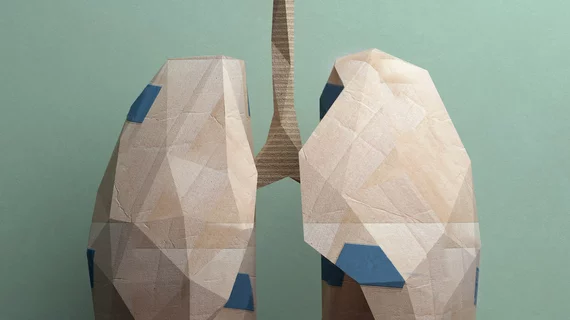Virtual lung cancer screening visits a viable alternative to in-person appointments
Virtual visits are just as effective as in-person lung cancer screening (LCS) appointments, suggesting there is more than one way for patients to fight the deadly disease.
Lung cancer screenings dropped by up to 75% during stretches of the pandemic, forcing Temple University Hospital to lean more heavily on its telemedicine offerings. The Philadelphia safety net hospital pivoted toward discussing low-dose CT screening results with patients during virtual visits instead of in-person, and the results proved effective.
The group found no significant difference in the frequency of procedures performed for diagnosing cancer—including CT-guided biopsies, surgery, and deaths prior to diagnostic workup—when comparing visits before the pandemic to virtual visits during shutdowns.
Cherie P. Erkmen, MD, a thoracic surgeon at Temple, noted they were able to reach many Black patients who are less likely to be screened but more likely to die from the disease.
“Overall, we do a sorrowful job of getting people to undergo lung cancer screening,” Erkmen added in a statement. “We can reduce preventable lung cancer death by finding novel ways of getting people screened.”
The researchers compared single-visit LCS visits (673 patients) before the pandemic to those who opted for single encounter virtual visits since March 2020 (440 patients). For both groups, Erkmen et al. assessed race, smoking history, education attained, Lung-RADS, cancer diagnosis and stage, and adherence to follow-up recommendations.
The results revealed similar Lung-RADS results between both types of visits. And the same trend proved true for CT-guided biopsies (0.4% for cancers diagnosed during single visits vs. 0.5% for those diagnosed via telemedicine appointments). Similar findings were observed for endobronchial ultrasound bronchoscopies and percentages of patients who declined diagnostic workup.
Erkmen said the program is still in use and may help screen for other cancers. Overall, the team wants to do anything it can to improve upon the low 3%-6% of screening-eligible patients who actually undergo exams.
“Moving forward, even though telemedicine has proven to be helpful during a pandemic we should really be looking at all different means of engaging patients and maybe even a combination,” Erkmen said. “Whatever it takes, we need to get more people screened.”
The study was first presented at the American College of Surgeons Virtual Clinical Congress taking place Oct. 23-Oct. 27.

